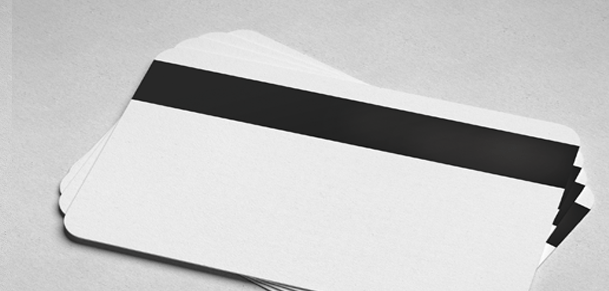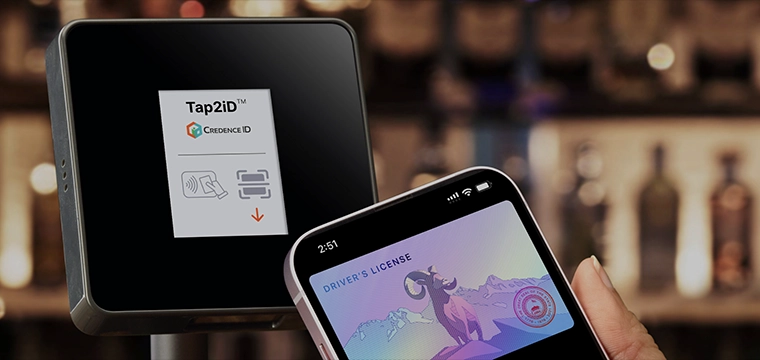
Editor's Note: Over the years we have received more requests for this magnetic stripe information than any other, with a mix of technical and application information. However, if you feel yourself glazing-over through some of the technical data, be sure and see the section “What does this mean to my campus?” for your strategic reference and then forward this to your technical staff for their entertainment!
Few would argue that the most important technology in the campus card market has been and remains the magnetic stripe. Nearly every campus card has that black stripe on the back, regardless of other technologies that might be included. The barcoded cards and even the smart cards issued to date still rely on the mag stripe to drive many of the on-campus applications. Off-campus, any program working with a financial institution depends on the mag stripe to drive ATM and point-of-sale purchasing functions.
The International Organization of Standards (ISO) laid the groundwork for the physical dimensions of magnetic stripe cards as we now know them in IS 7810, then began mapping the standardized layout for the data tracks in IS 7811.
Looking at any of a handful of cards likely to be in your wallet or purse reveals the physical dimensions set by the ISO technical committee for information processing (TC 97). But you cannot see the data with the naked eye. What is in that 0.33 inch by 3.375 inch stripe that has made this such an important on enduring technology? Many are surprised at the small amount of data actually stored on a magnetic stripe, likely because of its many applications and uses.
Typical magnetic stripe cards have either two or three separate tracks. These tracks are 0.11 inches in height and can be thought of unique lines of text. While three tracks have been standardized via ISO efforts, a card issuer may choose to leave off the third track depending on application need. Each track has a different purpose, recording density, and content.
Track 1, designed by the International Air Transportation Association (IATA), was envisioned as a keeper of airline ticketing and reservation data. Its use has been expanded and now has nothing to do with the IATA in a practical sense. This track can store seventy-nine alphanumeric characters, each seven bits. It is read-only, with a data compression of 210 bits per inch. Typically, track 1 data includes the cardholder’s name and account number.
Track 2 is the creation of the AmericanBankers Association (ABA). It holds 40 numeric characters and no alphabetic characters. While the entire magnetic stripe is often referred to as ABA-standard or ABA-encoded, only the forty numeric digits housed in this track are required to make a card ABA compliant. Track 2 data is compressed at 75 bits per inch, is read-only, and holds in its first field a 16-digit account number.
The Thrift Industry developed Track 3, the main differentiation from Tracks 1 and 2 being its read-write capability. Designed to be updated with each transaction, track 3 can house 107 numeric five-bit digits and utilizes a compression rate of 210 bits per inch.
So how does it work? All magnetic recording–audio tapes, video tapes, or a magnetic stripes–is made possible by ferromagnetic particles held together in a paint or tape. These particles, each only millionths of an inch in length, hold magnetic charge after an external magnetic field has acted upon them and been removed. In other words, the particles retain their most recent polarity (positive or negative).
On an un-encoded stripe, all particles are aligned in one direction meaning they all have the same polarity or charge. The encoding process involves changing the polarity of certain particles in specified regions of the stripe. Make a pattern of negative charged particles and positive charged particles and you can symbolize data in the patterns. Inside an encoding device such as the ones located in most plastic card printers, is an encoding head. The encoding head is really just a magnetic field producer with the ability to switch between positive and negative charges as directed by a computer. The computer tells the encoding head when to switch from positive to negative and thus controls the pattern of charged particles on the magnetic stripe.
A binary situation is created via this process—only two options exist for a particle’s state, positive or negative. In binary calculations, these states are read as zeros and ones. Letters and numbers can be represented by a series of zeros and ones as in all digital media and computers.
The American National Standards Institute (ANSI) and the International Standards Organization (ISO) have laid out two standards for this binary process and current mag stripes use both (without such standards, one could never be certain which readers could read which cards).
The first is the ANSI/ISO BCD Data format. It uses 5-bits of data (5-zeros and ones) to create the character set. In reality, only 4-bits are used for character set creation while the fifth bit is check digit that always leaves the character with an odd number of 1’s. Using this check, a reader can (at least to a limited level) monitor its own read-accuracy.
Thus, 4-bits are used to create a 16-character set (2x2x2x2=16). Ten of the sixteen create the numeric digits (0,1,2,3,4,5,6,7,8,9), leaving 6 characters free. These 6 are specified as framing (3) and control (3) characters, and are typically used to organize data in fields. (These characters are described later).
The second standard is the ANSI/ISO Alpha Data Format. It is 7-bit method, 6-bits used for character encoding and 1-bit used as a check. Sixty-four characters are created via this method (2x2x2x2x2x2=64). The definition of the set is as follows: forty-three alpha-numeric characters including all digits and alphabetic characters, 3 framing characters, and eighteen control characters.
In both standards, 3 of the non-specified characters are dedicated as framing characters: the Start Sentinel (SS), the End Sentinel (ES), and the Longitudinal Redundancy Check (LRC). The SS is used to signify the beginning of meaningful data. In most encoding schemes, a series of zeros (called syncing characters) begins the line of data in an effort to give the reader a chance to sync with the card. The SS typically follows these syncing characters. The ES falls at the end of the meaningful data to signify its end. The LRC follows this end and serves as an error check for the whole line of data, in much the same way that the extra bit (number five in BCD standard and number seven in Alpha standard) checks the individual character.
Coercivity is the term used to describe the level of magnetic pull necessary to change the polarity of the particles in the stripe. As the names suggest, a high coercivity (HiCo) stripe requires a high level of pull to accomplish the flip, while a low coercivity (LoCo) stripe requires less pull. The unit of measurement for magnetic pull is the oersted. A HiCo stripe encodes at 2750 oersteds or greater. A LoCo stripe encodes at 300 oersteds. Both HiCo and LoCo cards can be read in the most of the card readers in use today.
What does this mean to a card platform? Because LoCo materials encode at a lower level, it requires a lower coercivity to damage the encoded material. Thus, LoCo cards are more susceptible to damage or accidental erasure from proximity to magnetic materials. Neither card is more resistant to physical wear or abuse than the other.
What does this all mean to my campus?
Now that we understand how a mag stripe works and what data is encoded on an ISO standard stripe, what does it mean at the campus level. The information should serve as a guide to making us informed buyers. Lets look at a series of points to consider:
In actuality, all tracks are made of precisely the same materials and thus can be encoded any way one likes. For example, you could encode track 1 with the track 2 standard information or store alpha-numeric data in the normally numeric-only track 3. The issuer of the card chooses how to set up the data encoded upon it. However, if non-standard formats are utilized it can greatly impact the ability to use the card in future applications.
Most widely used applications have opted to take advantage of the existing standards for data layout. This enables simplicity of effort, ease of reader deployment, among other benefits. Take for example the financial card market. If a card is not encoded in a standard manner, it cannot be read by ATMs and point-of-sale terminals.
This is a tricky question. It is impacted by the types of readers deployed and the applications being used. Readers impact the question because not all readers can read all tracks. Some readers are only designed to read a single track on the card. Thus if you moved information required for a specific function to another track, you might have to replace certain card readers. Most readers sold today, however, are able to read all three tracks. They are programmed to read the desired tracks and information in the field and can be reprogrammed as needed.
A bigger issue comes when the applications utilizing data on the card are reviewed. If you are currently utilizing a proprietary ID number stored in track 2 for meal plan privilege control, and you decide to switch to an ABA-standard track 2 layout, the proprietary number will likely be replaced or moved. If you are replacing all cards at once, this should not be a problem as you would simply replace ID numbers in the meal plan database and reprogram the readers as necessary. If, however, you are intending to utilize both the old cards and the new cards, the meal plan readers would not know how to judge between the card types and determine privileges from the database.
Whenever possible go with an established standard. It only makes things easier in the long run. Today, every vendor can handle standard data formats and can utilize the ID numbers in their system. This was not the case five years ago. If you need certain non-standard elements on the mag stripe (e.g. proprietary student ID number, street address, entrance date) investigate housing this data in either track 1 or 3. This will leave track 2–the track used by the great majority of non-proprietary applications–for standardized formatting.




